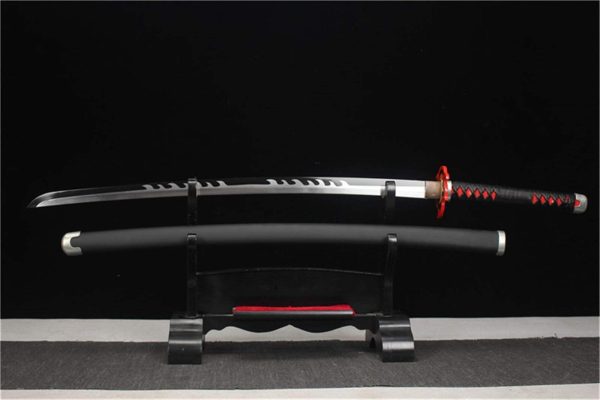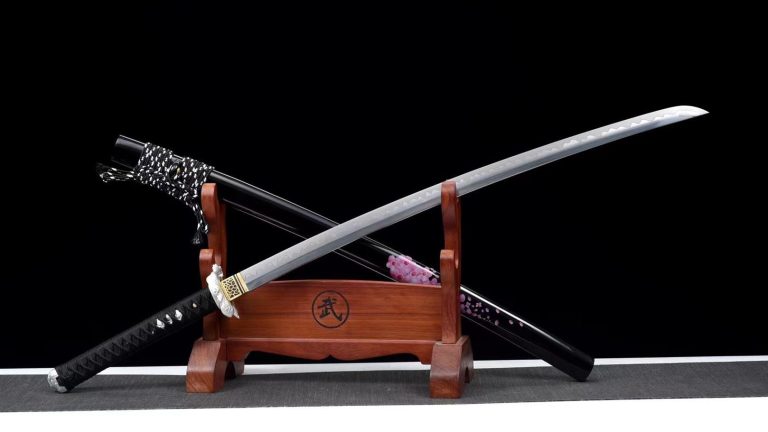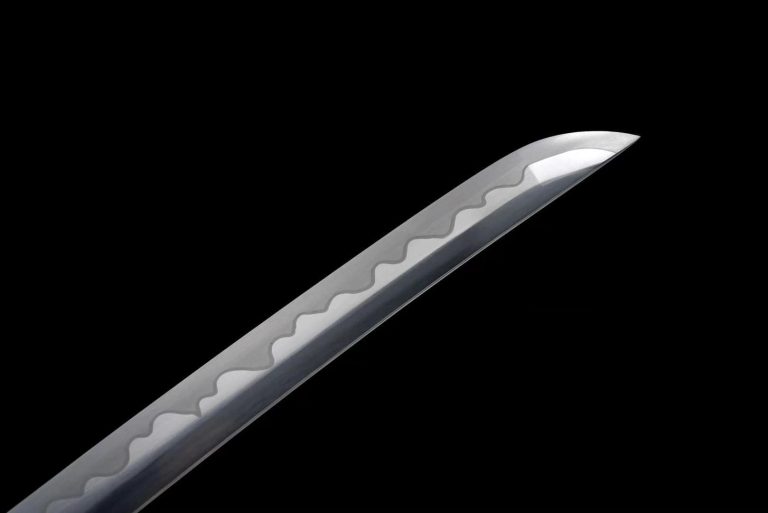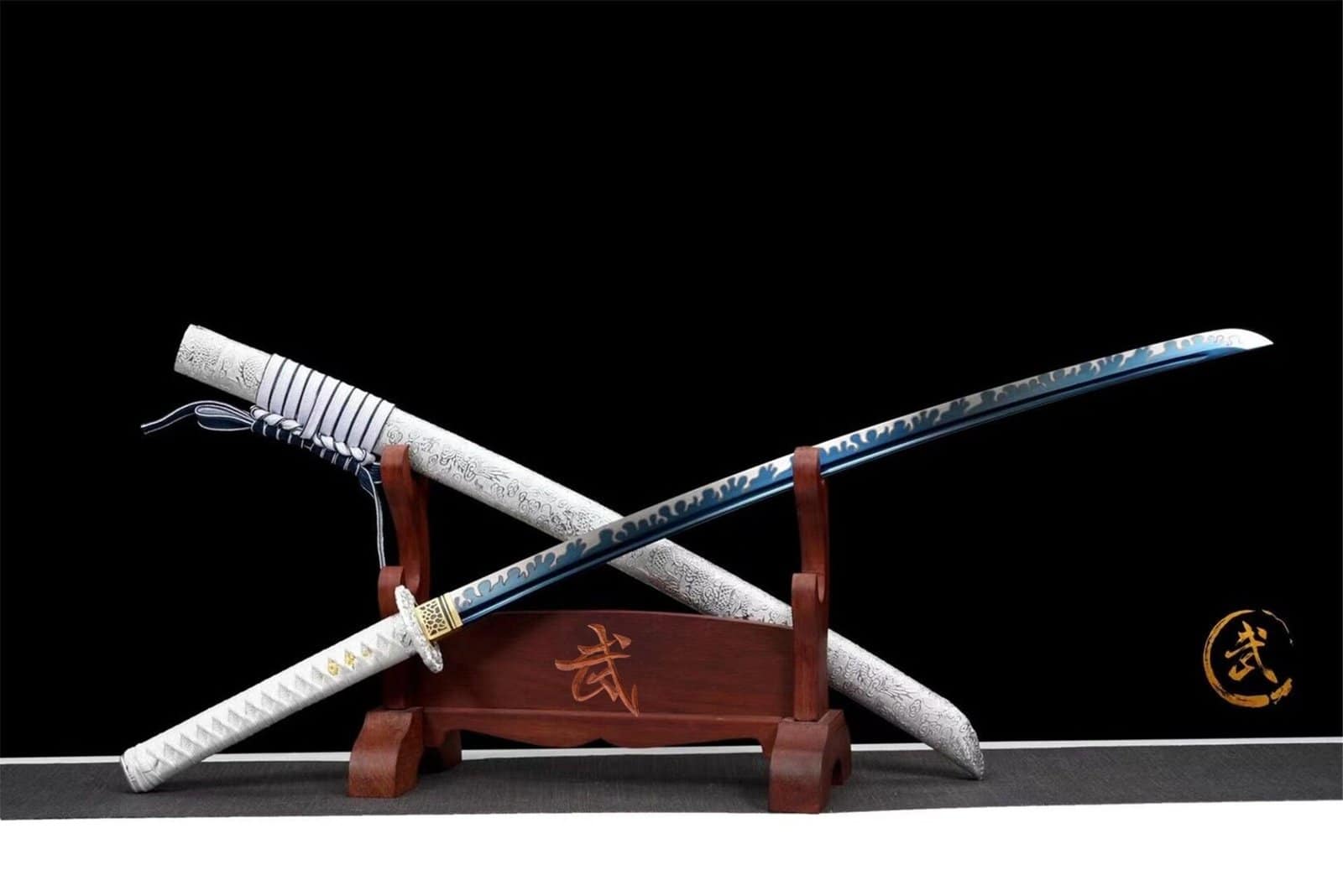Prestigious Katana
All our swords are Hand-Forged by Masters using prestigious materials with over 2000 years of history in forging.
Rated by our clients ★★★★★ 4,9/5
Details
The Katana: History, Evolution, and Modern Significance
<32>What is a Katana?A katana is a traditional Japanese sword known for its distinctive curved blade, single edge, and long grip, allowing it to be wielded with two hands. The katana emerged during Japan’s Kamakura period (1185–1333) and became the samurai’s weapon of choice due to its superior cutting ability and quick draw from the scabbard. Over centuries, the katana evolved both in its crafting techniques and cultural significance. Today, while no longer used in combat, katanas are highly revered as works of art and are popular decorative items, symbolizing the samurai spirit and Japanese craftsmanship.
Origins and Historical Usage
The katana’s origins can be traced back to the need for more effective weaponry during the Kamakura period. The curved design was developed to improve the efficiency of drawing and cutting in a single motion, a technique crucial for samurai warriors. Throughout the Muromachi period (1336–1573) and the Edo period (1603–1868), the katana’s design and construction were perfected, with master swordsmiths creating blades that balanced sharpness, flexibility, and durability. In modern times, katanas are primarily used in martial arts such as Iaido and Kendo, as well as being cherished collector’s items and displays of fine artistry.
Understanding Katana Terminology
Sori
Sori refers to the curvature of the katana blade. This curve enhances the sword’s cutting efficiency and allows for a smooth draw. The sori can vary, with different styles indicating the period or the swordsmith’s preference.
Hamon
Hamon is the visible temper line on the blade, showcasing the differential hardening process. This process not only creates a beautiful pattern but also enhances the blade’s performance, providing a hard, sharp edge and a softer, resilient spine.
Shinoogi & Shinogi-HI
Shinoogi is the ridge line running along the blade, separating the flat surface (shinogi-ji) from the cutting edge (ha). Shinogi-HI refers to the fuller or groove running parallel to the shinoogi, reducing the blade’s weight without compromising its strength.
Kisaki
Kisaki is the tip of the katana blade, crucial for piercing and detailed cuts. The shape and length of the kisaki can vary, with terms like “o-kisaki” for a longer tip and “ko-kisaki” for a shorter one.
Yokote
Yokote is the line that separates the kisaki from the rest of the blade. This demarcation is essential for maintaining the structural integrity and aesthetic of the sword.
Boshi
Boshi refers to the hardened edge at the tip of the blade. This area is crucial for maintaining the blade’s effectiveness in combat and ensuring the tip does not chip or break.
BO-HI
BO-HI is the groove running along the blade, often referred to as a fuller. It reduces the sword’s weight and can create a distinctive sound when the sword is swung.
Saya
Saya is the scabbard of the katana, traditionally made from lacquered wood. It protects the blade and is often adorned with intricate designs, adding to the sword’s aesthetic appeal.
Sageo
Sageo is the cord used to tie the saya to the samurai’s belt (obi). It is both functional and decorative, with various tying methods and styles reflecting different schools of swordsmanship.
Habaki & Seppa
Habaki is the metal collar around the base of the blade, ensuring a snug fit between the blade and the saya. Seppa are the washers on either side of the tsuba (guard), helping to secure the tsuba in place.
Tsuba
Tsuba is the guard located between the blade and the handle (tsuka). It protects the hand and can be highly decorative, showcasing the artistry of the swordsmith.
Same
Same refers to the ray or shark skin wrapped around the tsuka, providing a textured surface that improves grip.
Tsuka-ito
Tsuka-ito is the wrapping over the same, usually made of silk or cotton. This wrapping technique not only enhances the grip but also adds to the aesthetic quality of the katana.
Kashira
Kashira is the pommel or the butt cap at the end of the tsuka. It helps balance the sword and often matches the tsuba in design, completing the katana’s intricate appearance.
Katana Maintenance: Best Practices and Tips
Proper maintenance of your katana is essential to preserve its condition, performance, and beauty. Here are some best practices for maintaining your katana:
Best Practices
To maintain your katana, regularly clean the blade using a soft cloth and apply a thin layer of choji oil to prevent rust and corrosion. Ensure you handle the blade with clean hands or wear gloves to avoid transferring oils and moisture from your skin to the blade. When storing your katana, keep it in a dry environment and in its saya (scabbard) to protect it from dust and damage.
Reasons for Maintenance
Regular maintenance is crucial to prevent rust, corrosion, and deterioration of the blade. A well-maintained katana not only retains its sharpness and structural integrity but also its aesthetic appeal. Regular cleaning and oiling also help to spot any potential issues early, such as small nicks or signs of wear, allowing for timely repairs.
Frequency and Practices Based on Steel Type and Usage
The frequency of maintenance depends on the type of steel and how often the katana is used. For katanas made of 1070 steel or T10 steel, follow these guidelines:
- 1070 Steel: Katanas made from 1070 steel, a high-carbon steel known for its toughness and ability to hold a sharp edge, should be cleaned and oiled after each use or at least once a month if not in use. This frequency ensures the blade remains rust-free and in optimal condition.
- T10 Steel: T10 steel katanas, known for their high durability and edge retention, also require regular maintenance. Clean and oil the blade after each use or every two months if not frequently used. T10 steel is more resistant to wear but still needs protection against rust and corrosion.
Regardless of the steel type, if the katana is used frequently in martial arts practice, increase the cleaning and oiling frequency to after each session. This routine helps to remove sweat, moisture, and debris that can accelerate rust and damage.
Selection of the Week
Exceptional Expertise For Exceptional Katanas
Ancestral know-how for exceptional products
carousel title
from 19 reviewsABOUT US
Discover the story behind the Kazebushi brand and the adventures of its creator.
Here are the questions we’re Here’s a quick FAQ on the most frequently asked questions often asked :
